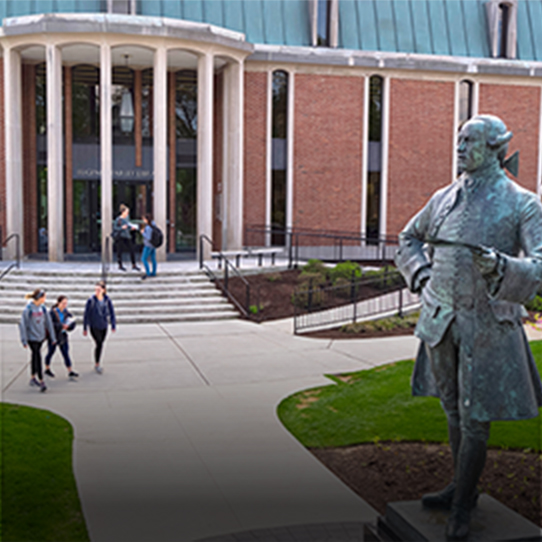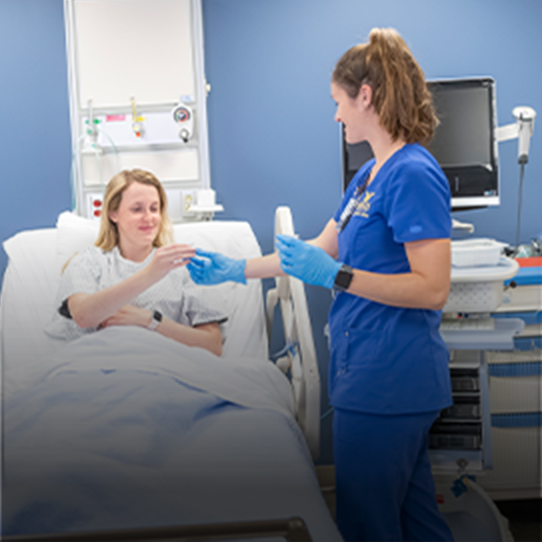Five Benefits of Being a Nurse Practitioner

The physician shortage isn’t a future problem in the pipeline; it’s already here. With an aging population and rates of chronic conditions steadily increasing, the demand for healthcare providers in the United States is accelerating at an astonishing rate.
As of 2022, the US has the highest rate of people with chronic conditions at 30.4% but is among the lowest in the world for hospital beds and practicing physicians per 1,000 people. Some models project that the US will be short 23,640 primary care physicians before 2025.
Perhaps no one understands the impact of this better than the healthcare workers who see it happening on the ground. Registered nurses are well aware of the way that nursing shortages, as well as the limited number of primary care providers, can negatively affect health outcomes for people under their care.
Physicians will be in high demand for the next few decades, but they aren’t the only ones qualified to provide primary care. Experts predict that physician associates (PAs) and nurse practitioners (NPs) will be increasingly relied upon as primary care providers for patients.
For RNs who already have a Bachelor’s degree in Nursing (BSN), this increase in demand for NPs presents a compelling opportunity. A healthcare system with more NPs is less strained, more competent and offers better support for patients.
But it’s not just the public who stand to benefit from more RNs making the transition to nurse practitioners. The benefits of being a nurse practitioner extend on a personal level to the person who continues their education and takes the job.
RNs who already have a Bachelor’s degree in Nursing (BSN) should carefully weigh the pros and cons of the opportunity as they consider why they might want to do it. Let’s discuss some of the most compelling reasons why to become a nurse practitioner.
What does a nurse practitioner do?
Nurse practitioners (NPs) are a type of advanced practice registered nurses (APRNs). They are educated to provide advanced care that advances their RN knowledge. For RNs to become NPs, they need to complete specialized coursework at the graduate level. The first NP program was founded in the United States over 55 years ago, and the profession has attracted talented, highly-capable nurses dedicated to elevating the nursing profession.
NPs can diagnose health conditions, create treatment plans, prescribe medication, and act as primary healthcare providers for people who need medical attention
The job description of a nurse practitioner can vary according to their specialty concentration and where they work. The majority of nurse practitioners specialize and work in primary care settings such as physician’s offices, but they can also be found in almost every healthcare setting, including:
- Urgent care centers
- Community health centers
- Primary care clinics
- Nursing homes and other types of assisted living facilities
- Psychiatric hospitals and mental health facilities
What are the benefits of being a nurse practitioner?
Some reasons why an RN might choose to become a nurse practitioner include:
1. Pay increase opportunities
For some, a big motivator for becoming a nurse practitioner may be the salary forecast. According to the US Bureau of Labor Statistics, NPs earn a mean average salary of $124,680. That’s a significant increase over the mean average salary for an RN, which was $89,010 as of May 2022.
The opportunity to work as a nurse practitioner also offers a potentially huge return on investment compared to what it costs to become one. An online program like Wilkes MSN-NP, will likely pay for itself quickly once you enter the field with your new degree.
2. Diverse specialties
NPs can choose from a variety of specialty concentrations, selecting one that appeals to their work history and personal interests. The concentration that they choose will largely determine the population that they serve throughout their career as an NP, and NPs become incredibly well-versed in providing patient care within their specialty. This level of familiarity and expertise can be quite appealing to many RNs.
Some of the most in-demand concentrations for NPs are:
- Adult-gerontology primary care nurse practitioner (AGPCNP). This concentration focuses on meeting the healthcare needs of adolescents through older adults. The older adult population is quickly expanding; the US projects a 42.4% increase in the number of people 65 and older within the next ten years.
Some older people living at home who prefer to age in place use an NP as their primary care provider, while others see an NP in an assisted living facility. NPs may also offer home health care services. - Psychiatric/mental health nurse practitioner (PMHNP). The number of people in the US who need healthcare to address a mental health condition continues to increase. One out of every five people has a mental health condition, yet 150 million people live in what the federal government has designated a shortage area for mental health professionals. PMHNPs can work in primary care settings and inpatient hospitals and often work alongside psychiatrists and psychologists.
- Family nurse practitioner (FNP). FNPs can see patients across the lifespan. They can treat newborns, pregnant women, adolescents, and adults and older adults. This means FNPs are uniquely equipped to act as the PCP for entire families. FNPs are in-demand in specialty clinics and office settings.
3. Increased autonomy
As of 2022, 27 states as well as Washington, D.C. have what is called “full practice authority” (FPA) for nurse practitioners. In places with an FPA in place, NPs are granted the ability to evaluate and diagnose patients, order diagnostic tests, interpret test results, initiate and manage treatment plans and prescribe medication, without the oversight of a physician.
The number of states granting FPA to nurse practitioners is continuing to grow, and the positive results of this change mean more states will likely follow suit. The American Association of Nurse Practitioners notes that states that give NPs full practice authority have better access to primary care as well as better healthcare access for seniors.
4. Patient impact
Nurse practitioners are hands-on healthcare workers who are in a unique position to plan and manage care for their patients. NPs who have worked as nurses in the field often understand the practical realities of patients’ lives and their needs. NPs can advocate for their patients in all areas of health care.. They also educate patients and family members on strategies for improved wellness and symptom management.
A systematic review of the literature published in 2017 looked at 15 studies on NP care in hospitals. The review found that patients with access to nurse practitioners had improved clinical outcomes in emergency and critical care settings. Also, patient satisfaction was higher, costs were lower, and patients were discharged sooner when an NP was involved in care.
5. High demand
Nurse practitioners stand to benefit from the enormous demand for primary care providers and supplementary care needs outlined above. The NP workforce was named in 2021 as the fastest-growing occupation in the United States, and the Bureau of Labor Statistics (BLS) estimates that the profession is projected to expand by 46% in the next ten years.
With over 100,000 new nurse practitioner jobs being created by 2031, NPs will continue to be highly valued by their employers.
How to become a nurse practitioner
RNs with a BSN can become nurse practitioners through an online MSN-NP at Wilkes University. Excluding required clinical hours and residencies, the entire program is online and can be completed in 24 to 28 months.
Wilkes offers three exciting NP concentrations that will give you the in-demand skills to advance your nursing career. Learn more about the MSN-NP options at Wilkes and check out the program guide for more information.




